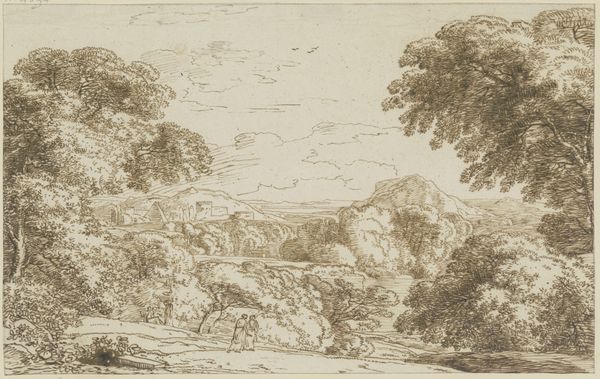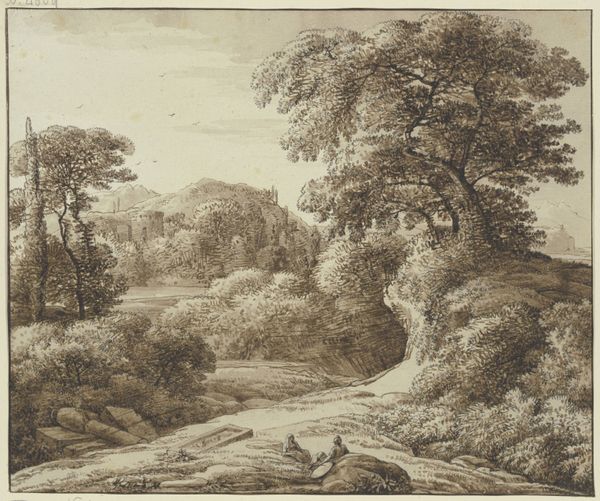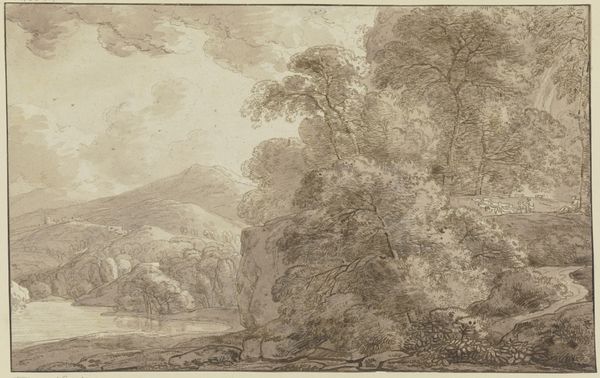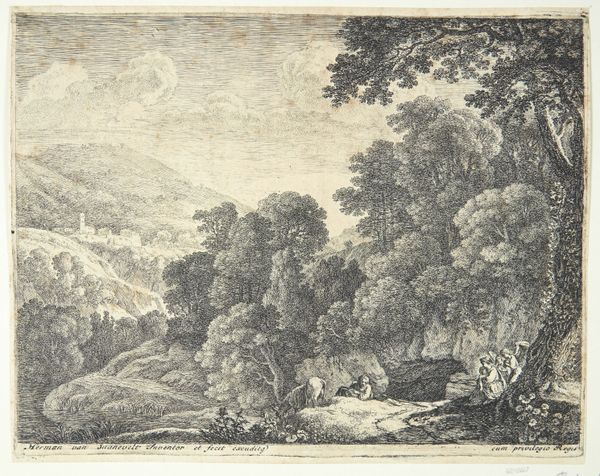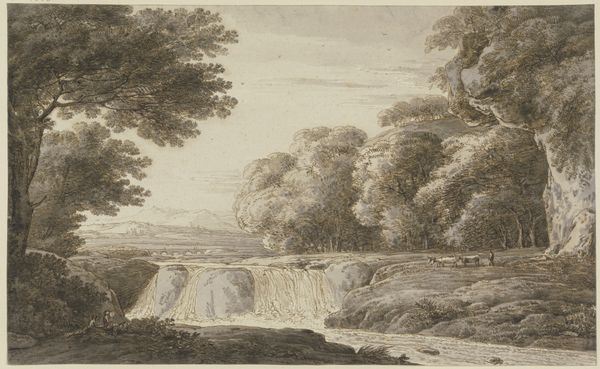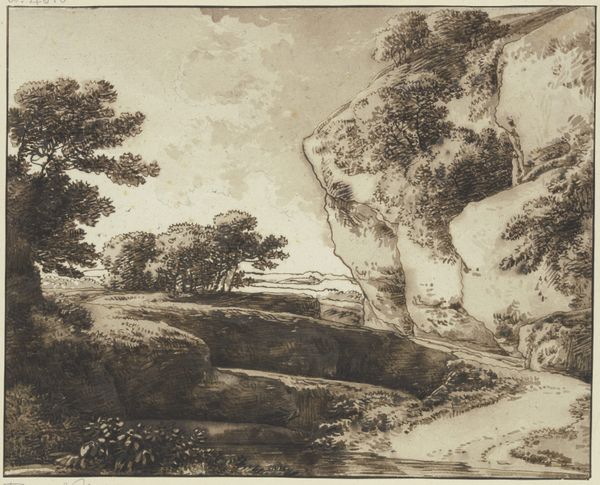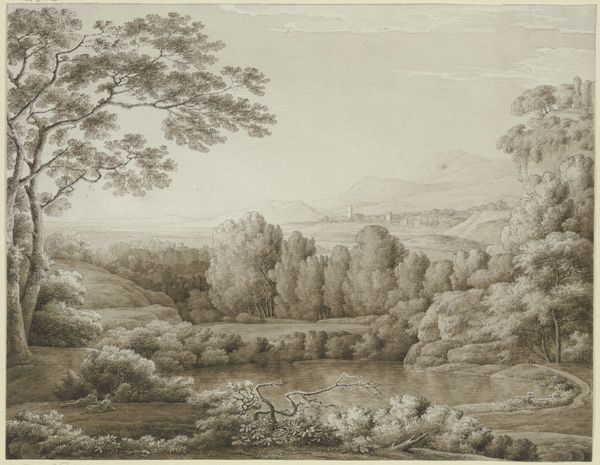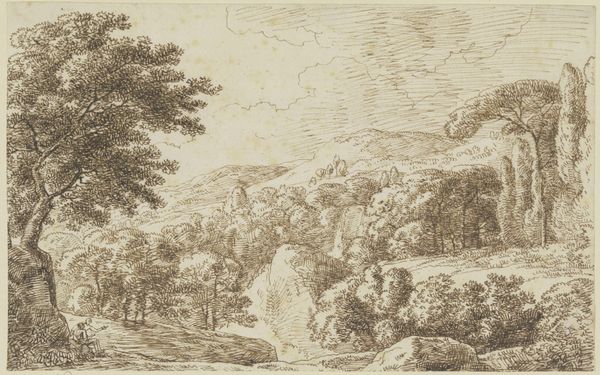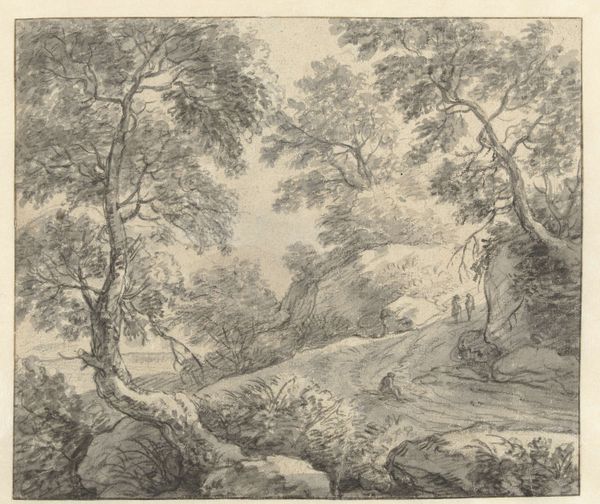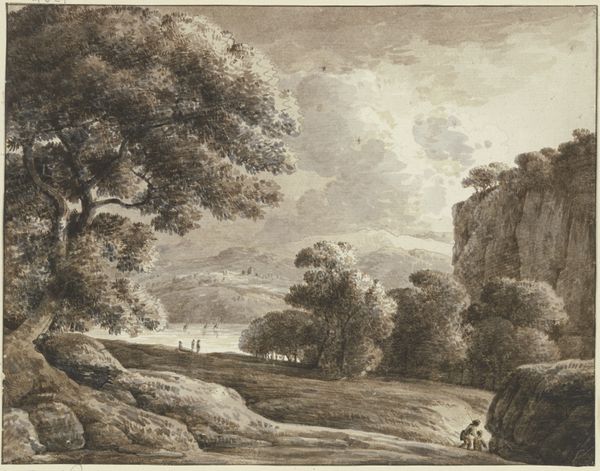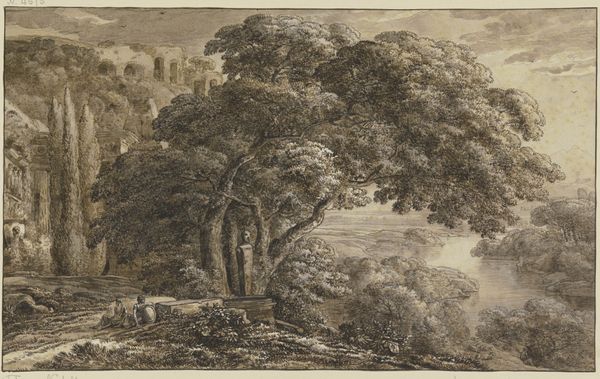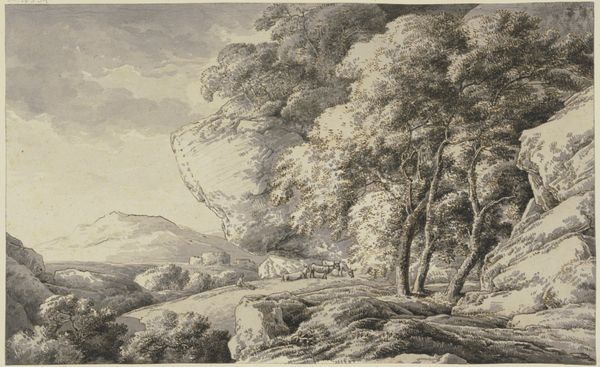
drawing, ink, graphite, pen
#
drawing
#
neoclassicism
#
landscape
#
ink
#
romanticism
#
graphite
#
pen
Copyright: Public Domain
This landscape was drawn by Franz Kobell, who was active in Germany during the late 1700s and early 1800s. It’s executed in pen and brown ink on paper, a classical approach to drawing. The fineness of the line suggests it was made with a quill, which gives a characteristic swell and taper. Look closely, and you can see how Kobell varies the pressure to create subtle tonal effects. The artist must have had total control over the pen, as the landscape is depicted with impressive detail, and without any smudging. In its laborious, descriptive quality, the drawing sits within a long tradition of topographical representation. It's the kind of image that would have been made as a record, perhaps as an aid to planning construction in the landscape. But Kobell's skill at depicting a real view also aligns him with the fine arts, and their emphasis on personal expression. So, it’s a drawing that operates both within the world of work, and the world of aesthetics.
Comments
No comments
Be the first to comment and join the conversation on the ultimate creative platform.
